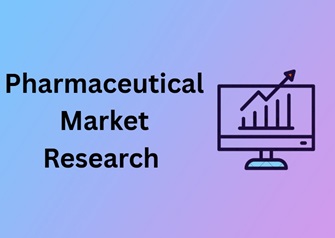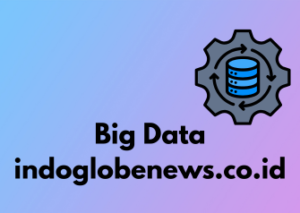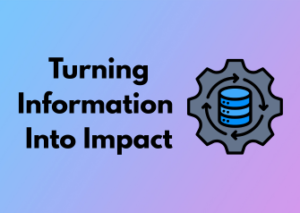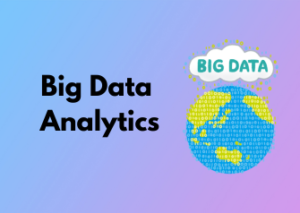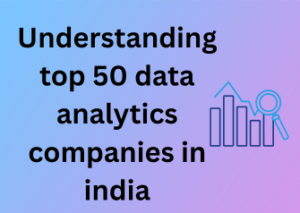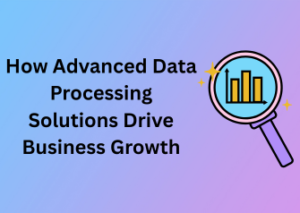Behind every groundbreaking pharmaceutical innovation and life-changing drug, there’s a powerful engine silently working in the background. That engine is market research – the backbone of informed decision-making in the pharmaceutical industry. Without it, companies would be navigating a maze blindfolded, hoping to stumble upon patient needs and market opportunities. Let’s dive deeper into why this is the very foundation of smart business strategies in the pharmaceutical world.
At its core, market research is about understanding the critical elements that drive demand, competition, and opportunities. It equips companies with the knowledge needed to make confident, precise, and forward-thinking decisions. Whether it’s developing a new drug or entering an untapped market, the importance of robust market research cannot be overstated.
The Key Questions Your Market Research Should Answer
Pharmaceutical market research is not just about crunching numbers; it’s about identifying patterns that reveal the big picture. Here are some key questions that solid research should always address:
- What are the unmet needs in the market? Whether it’s diseases lacking adequate treatments or patient pain points with existing therapies, identifying these gaps is critical.
- Who are the key stakeholders? From prescribers to payers and patients, understanding the varying perspectives of stakeholders ensures your strategies resonate with the right audience.
- How does your competition perform? Evaluating competitors’ strengths and shortcomings provides invaluable insights into positioning your company and solutions effectively.
- What trends are influencing the landscape? Being proactive with emerging technologies, regulatory shifts, and patient behavior can set you apart as a market leader.
Why Data Alone Isn’t Enough
It’s tempting to think of market research as simply gathering heaps of data, but the real magic happens when data transforms into actionable insights. At this stage, experts analyze the “why” behind the numbers, weaving together a narrative that shows pharmaceutical companies not just where the market is today, but where it’s heading tomorrow.
For instance, understanding that X million people suffer from a condition is one thing. But discovering untapped opportunities within that demographic—such as specific patient subgroups needing targeted treatments—is the kind of insight that empowers companies to act decisively.machine learning
How to Lay a Solid Foundation for Decisions
So, how can pharmaceutical companies ensure their market research efforts effectively fuel their strategic foundation? Here’s some advice from the industry experts:
- Start with your objectives: Be clear on what questions need answering. Are you building a new product pipeline? Identifying regional market potential? Specificity is key.
- Leverage multiple sources: Combining quantitative data (surveys, sales figures) with qualitative insights (focus groups, stakeholder interviews) creates a comprehensive picture.
- Use technology wisely: Advanced tools like AI and predictive analytics can make your research faster and more precise.
The Role of Data in Shaping Future Medicines
Ever wondered how the medicines on your pharmacy shelf are developed? It’s not just about trial and error. In today’s world, medicines are carefully crafted, tested, and refined using the lifeblood of modern science: data. If the pharmaceutical industry were a puzzle, data would be the most critical piece, tying together all the different parts into one cohesive picture.

What Makes Data So Powerful?
Data is the fuel behind informed decision-making. In the pharmaceutical industry, it’s used to identify patterns, predict outcomes, and streamline processes to create medicines that truly work. From evaluating patient needs to testing drug efficacy, every step of the journey is anchored in data.
Think about it: when scientists are working on a new treatment, they rely on vast amounts of patient records, clinical trial results, and even genetic data to ensure it meets the needs of real people. Without the insights data provides, we’d still be fumbling in the dark, relying on guesswork rather than precision.
How Does Data Shape Future Medicines?
Let’s delve into some of the game-changing ways data is transforming the way we create and refine medicines:
- Understanding disease trends: By analyzing years’ worth of healthcare records, researchers can uncover patterns that reveal the rise and fall of certain diseases, as well as their impact on different populations.
- Tailoring therapies: Data allows researchers to go beyond one-size-fits-all solutions. Through approaches like precision medicine, scientists can craft therapies that are customized to a person’s unique genetic makeup or medical history.
- Improving clinical trials: Clinical trials are expensive and time-consuming, but data is revolutionizing this process. Predictive analytics can identify the right candidates for trials, reduce costs, and even speed up the time it takes to bring new drugs to market.
- Assessing safety and efficacy: Post-market data collection ensures that medicines not only do their job but are safe for long-term use. By continuously monitoring how drugs perform in the real world, pharmaceutical companies can refine their products and address any emerging issues.
Case in Point: Big Data and AI
One of the most exciting developments in this space is the marriage of big data with artificial intelligence (AI). These cutting-edge technologies empower companies to sift through enormous datasets in record time, spotting trends and insights that millions of human eyes might miss.
For example, imagine a program that can scan through millions of medical reports to identify potential drug candidates for a rare disease. What once might have taken years – or been impossible to accomplish altogether – can now be achieved in a matter of weeks. This is the power of data when paired with technological advancements.
Bridging Gaps Between Patients’ Needs and Industry Outputs
When it comes to the pharmaceutical industry, success isn’t just about creating groundbreaking medicines; it’s about ensuring those medicines resonate with what patients truly need. Sadly, a gap often exists between patients’ needs and the treatments pharmaceutical companies bring to market. But here’s the good news: bridging that gap isn’t just possible—it’s essential for both improving health outcomes and fostering industry innovation.
Why This Gap Exists
The gap between patients and pharmaceutical companies can often feel like a vast chasm. Here’s why:
- Limited Direct Communication: Patients often don’t have a seat at the table when drugs are being developed, leading to their needs being lost in translation.
- Focus on Market Trends Instead of Individuals: Companies sometimes prioritize market trends or regulatory guidelines over understanding individual patient experiences, inadvertently creating generic solutions to complex problems.
- Knowledge Gaps: Healthcare providers and patients may not always fully understand how industry pipelines work, just as companies may lack firsthand patient perspectives.
Thankfully, modern pharmaceutical market research is undergoing a shift—a human-first transformation. The bridge between disconnected industry outputs and real-world patient concerns is already being built, one insight at a time.
Building the Bridge: How Research Makes a Difference
So, how can pharmaceutical companies do better? It starts with listening more and interpreting better. Here are some proactive ways pharmaceutical market research helps mend the disconnect:
- Patient-Centric Research Models: Today’s pharmaceutical market research revolves around engaging patients directly. Surveys, focus groups, and patient-reported outcomes ensure that real voices are heard. These insights don’t just sit in a dusty report—they actively shape R&D decisions.
- Understanding the Patient Journey: By studying how patients experience a condition—from initial symptoms to treatment outcomes—companies can uncover unmet needs. Think of it as walking a mile in the patient’s shoes to identify the pain points traditional treatments might overlook.
- Incorporating Behavioral Insights: Patients aren’t just spreadsheets of data—they’re people with emotions, habits, and nuanced behaviors. Research helps tap into these layers, improving adherence and experience by creating drugs that fit into everyday lives with ease.
Case in Point: Success That Resonates
Some companies are already shining examples of what it looks like to bridge the gap:
- A biopharma firm working directly with rare disease patient advocacy groups to understand their struggles and develop tailored therapies.
- A healthcare startup transforming treatment delivery by collaborating with patients to design simpler and less painful self-injectable medications.
These examples demonstrate how working hand-in-hand with patients can lead to life-changing outcomes—not only for those using the treatments but also for companies making them.
Small Steps, Big Impact
Closing the gap doesn’t require reinventing the wheel; it requires a series of thoughtful, deliberate changes:
- Integrating patient feedback loops within every phase of product development.
- Bringing technology onboard to collect and analyze real-world evidence about treatment effectiveness.
- Fostering open dialogue, where patients are seen not just as end-users but as collaborative partners.
Ultimately, bridging the divide between patients’ needs and industry outputs isn’t just a corporate responsibility—it’s a moral obligation. Patients deserve to feel seen, heard, and valued during the development of therapies that shape their lives.
Emerging Trends and Their Influence on Drug Development
The pharmaceutical world is evolving faster than ever, and keeping an eye on emerging trends can make all the difference when it comes to innovative drug development. These trends aren’t just buzzwords—they’re driving forces that are reshaping how new medicines are discovered, manufactured, and delivered to the people who need them most. Let’s explore some of these exciting developments and how they’re leaving a lasting impact on the industry.
The Rise of Personalized Medicine
Gone are the days of “one-size-fits-all” treatments. One of the most important shifts in drug development today is the focus on personalized medicine. Thanks to advancements in genomics and biomarker identification, pharmaceutical companies can now create therapies that work specifically for an individual or a small subset of the population.
For example, in oncology, precision medicine has already made waves by targeting specific genetic mutations in cancer patients, leading to more effective and less harmful treatments. This trend is not only improving patient outcomes but also encouraging companies to adopt more focused research and development (R&D) strategies.
AI and Machine Learning: The Digital Brain of Pharma
Artificial Intelligence (AI) and machine learning are rapidly becoming staples in the drug development toolbox. These technologies can analyze massive datasets in record time, identifying promising compounds, predicting drug interactions, and even automating clinical trial planning. In fact, many companies are now using AI to screen thousands of drug candidates in the early stages of development, significantly accelerating the process and reducing costs.
What does this mean for pharmaceutical professionals? Well, integrating AI into R&D workflows allows companies to make smarter, data-driven decisions—and stay ahead of the curve in an increasingly competitive market.

Sustainability in Drug Development
The world is becoming more environmentally conscious, and the pharmaceutical industry is no exception. One emerging trend is the move towards sustainable practices in drug discovery and manufacturing. Companies are exploring “green chemistry” techniques to reduce the use of hazardous substances and make the production process more eco-friendly.
In addition to environmental benefits, sustainability can also boost an organization’s reputation and attract socially responsible investors. After all, patients and stakeholders alike now expect companies to be as conscious about their carbon footprint as they are about curing diseases.
Faster Approval Pathways
Regulatory bodies like the FDA and EMA are accelerating pathways for approval to ensure patients get early access to essential, life-saving medicines. Breakthrough therapy designations, fast-track programs, and adaptive trial designs are a few examples of how regulation is adapting to modern challenges. This is especially crucial during global health crises, such as pandemics, when time is of the essence.
The lesson here? Companies need to stay agile, form collaborative relationships with regulators, and design their clinical trials with speed and efficiency in mind.
Real-World Evidence (RWE) Is Taking Center Stage
The days when drug trials relied solely on controlled, clinical settings are being reimagined. Real-world evidence, or data collected from everyday patient experiences, is becoming increasingly influential in shaping drug development decisions. RWE enables pharmaceutical companies to better understand how treatments work outside of the laboratory and address challenges that patients face in their real lives.
Redefining Market Entry Strategies with Accurate Insights
Breaking into the pharmaceutical market is no small feat. It requires a mix of precision, timing, and, most importantly, actionable insights. In today’s fast-paced, data-centric world, developing an impactful market entry strategy isn’t just about gut feelings or traditional methods; it demands a clearer, evidence-based approach to make confident decisions. Let’s dive into how accurate insights are revolutionizing market entry strategies and why they’ve become an essential tool for success.
Why Accurate Insights Are Non-Negotiable
Launching a pharmaceutical product isn’t just about filling shelves – it’s about addressing unmet medical needs, competing effectively, and ensuring sustainability. Insights gleaned from the right research can unveil key areas such as:
- Understanding the competitive landscape in a given therapeutic area.
- Identifying patient populations, including their unmet needs and preferences.
- Assessing market readiness and regulatory requirements for a specific region.
Without these foundational insights, entry strategies risk missing the mark, leading to wasted resources, longer timelines, and minimal impact.
The Role of Precision Targeting
Imagine trying to navigate without a map. That’s exactly what launching a product without the right insights feels like. Precision targeting stems from the deep understanding of the market – knowing who your customers are, where they are, and how to reach them effectively. This involves:
- Breaking down demographic and geographic data to find the right audience.
- Understanding prescribing behaviors of healthcare providers (HCPs).
- Spotting market segments or niche areas where competition is low, but demand is significant.
Accurate insights offer clarity, ensuring you don’t waste valuable resources on broad, unfocused strategies.
Adapting Strategies for Dynamic Markets
Pharmaceutical markets are constantly evolving, influenced by technological advancements, regulatory shifts, and consumer demands. What worked last year might not apply today. Staying agile and adjusting your strategies based on current, reliable data is critical. Accurate insights empower companies to:
- Stay ahead of competitors by predicting and acting on market trends.
- Pivot when unexpected changes arise – be it policy updates, new competitors, or emerging patient needs.
- Test new approaches before fully committing, reducing risks associated with market entry decisions.
Leveraging Real-World Evidence
Market entry decisions are now heavily enriched by real-world evidence (RWE). By analyzing data from healthcare systems, patient registries, and electronic health records, pharmaceutical companies gain practical insights into how their product might perform post-launch. This evidence strengthens decisions regarding pricing, positioning, and overall market strategy, optimizing success prior to entry.
Collaborate With Experts in Market Research
While having access to insights is vital, it’s equally important to interpret them correctly. Partnering with a pharmaceutical market research company that specializes in providing data-driven solutions can make all the difference. These firms don’t just offer data; they deliver customized recommendations based on your product, market goals, and competitive environment.
At the end of the day, entering a market with incomplete or outdated insights is like setting sail on a stormy sea without a compass. By redefining your approach with accurate insights, you can ensure that your launch is strategic, impactful, and built to succeed.
How Advanced Analytics are Reshaping Business Strategies
In today’s fast-paced pharmaceutical world, advanced analytics is no longer just a buzzword—it’s the cornerstone of creating smarter, sharper business strategies. Gone are the days when decisions depended solely on basic market data or gut feelings. Now, thanks to the power of advanced analytics, organizations can unearth valuable insights, identify hidden trends, and even predict future behaviors with remarkable accuracy. It’s like equipping your business strategy with a crystal ball—well, a highly scientific one!
What Is Advanced Analytics?
Think beyond traditional data crunching. Advanced analytics employs sophisticated tools like artificial intelligence (AI), machine learning (ML), and predictive modeling to dig deeper into data. These technologies not only look at “what happened” but also dive into “why it happened” and even forecast “what’s likely to happen.” Imagine being able to anticipate market shifts or identify the next big therapeutic breakthrough before your competitors. That’s the power of advanced analytics.
Why Does It Matter in the Pharma World?
The pharmaceutical industry is uniquely complex and highly competitive. From clinical trial success rates to market behavior, pharmaceutical businesses deal with an overwhelming amount of data. Advanced analytics brings clarity to this chaos by:
- Improving R&D Efficiency: Instead of millions spent on trials that may not work, companies can now simulate outcomes, identify promising compounds, and streamline trials.
- Enhancing Drug Launch Strategies: Analytics tools help pinpoint the right demographics, price points, and market timing to give new drugs the best chance of success.
- Optimizing Patient Engagement: Patients’ experiences and preferences are crucial. Advanced analytics helps pharmaceutical companies understand real-world patient behavior, ensuring that marketing or educational efforts resonate.
Real-World Applications
Let’s break it down with a few examples:
- Personalized Medicine: With analytics, companies can determine which patient groups will benefit most from specific treatments. This ensures better outcomes and can significantly reduce wastage.
- Sales Forecasting: Predictive models enable businesses to anticipate demand shifts, ensuring they meet market needs without overproducing.
- Identifying Market Entry Points: By combining patient data, provider behavior, and local healthcare trends, advanced analytics highlights the most lucrative regions to target.
Pro Tips for Leveraging Advanced Analytics
So how can you make the most of advanced analytics for your business? Here are a few quick tips:
- Invest in the Right Tools: Whether it’s AI-driven platforms or data visualization software, choose technology that aligns with your goals.
- Upskill Your Team: Data is only useful if understood. Equip your team with training to interpret analytics effectively.
- Collaborate Authentically: Work closely with analytics experts or firms who specialize in the pharmaceutical sector for tailored insights.
Choosing the Right Partner in Pharmaceutical Insights
If you’re in the pharmaceutical industry, you know the stakes are high. Every decision, from drug development to market delivery, has far-reaching impacts on patients’ lives and business success. So, when it comes to leveraging market insights, choosing the right research partner is more than just a checkbox—it’s a cornerstone for informed decision-making. Let’s talk about how to pick the perfect partner, one that aligns with your goals and empowers you with the knowledge needed to thrive in a competitive market.
1. Expertise Matters: Look for Proven Industry Knowledge
Not all market research partners are created equally. In the world of pharmaceuticals, you need a collaborator who genuinely understands the industry’s intricacies. From regulatory frameworks and clinical trial data to patient demographics and treatment trends, your partner should speak the language of healthcare as fluently as you do. A research company with seasoned expertise can help you **avoid costly mistakes** and identify hidden opportunities.
A great question to ask potential partners: “Can you provide examples of successful collaborations within the pharmaceutical sector?” Their answer will quickly reveal their level of familiarity and reliability in this specialized field.
2. Prioritize Customization Over Cookie-Cutter Solutions
Every pharmaceutical company is unique, so your challenges and objectives likely won’t fit a one-size-fits-all solution. The right partner will take the time to understand your specific goals and tailor their research services accordingly. Whether you’re launching an innovative therapy or trying to understand competitor landscapes, **personalized insights lead to actionable results**.
- Do they offer customized research focused on your niche?
- Can they adapt to your preferred timelines and specific inquiries?
If their pitch feels overly generic, it could be a red flag. After all, comprehensive insights come from asking the right questions, not taking shortcuts.
3. Don’t Overlook Technology and Innovation
The pharmaceutical industry thrives on innovation, and your research partner should be equally forward-thinking. Advanced analytics, artificial intelligence, and real-time data integration are no longer optional; they’re critical tools for staying ahead. A progressive market research company will utilize cutting-edge technology to provide you with **faster, more accurate, and deeper insights** into your market landscape.
Pro tip: During your vetting process, inquire specifically about their analytical capabilities and the tools they use. Can they process large datasets or offer predictive insights? If so, you’ve found a partner that’s prepared to evolve alongside tech-driven industry demands.
4. Communication and Transparency Build Trust
Imagine working with a research team that hands you a complex 200-page report with no explanation. Frustrating, right? Transparency and clear communication are signs of a trustworthy partner. They should be able to walk you through their findings, methodologies, and predictions in an accessible way. Better yet—they should feel like an extension of your team, always available to answer questions or adjust to your needs along the way.
When interviewing potential research companies, ask yourself: “Do they seem genuinely interested in a collaborative relationship, or are they just trying to make a sale?” That answer will tell you a lot about their commitment to your success.
5. Value Beyond the Numbers
While data is essential, a truly exceptional research partner brings more to the table. They understand your company’s broader mission and can help align market insights with your long-term goals. This holistic approach fosters a sense of shared purpose, ensuring their work doesn’t just inform your next step but fuels your overall success.
In Conclusion: Your Partner Shapes Your Future
Choosing the right pharmaceutical market research company isn’t just about ticking boxes—it’s about finding a partner who pushes your business forward. By prioritizing expertise, flexibility, innovation, and collaboration, you’ll set your team up for success. So, take your time, ask the tough questions, and look for a partner who truly understands the complexity of your industry. Together, you’ll be better positioned to make confident, informed decisions that impact not just your bottom line but also the lives of patients worldwide.
“`

